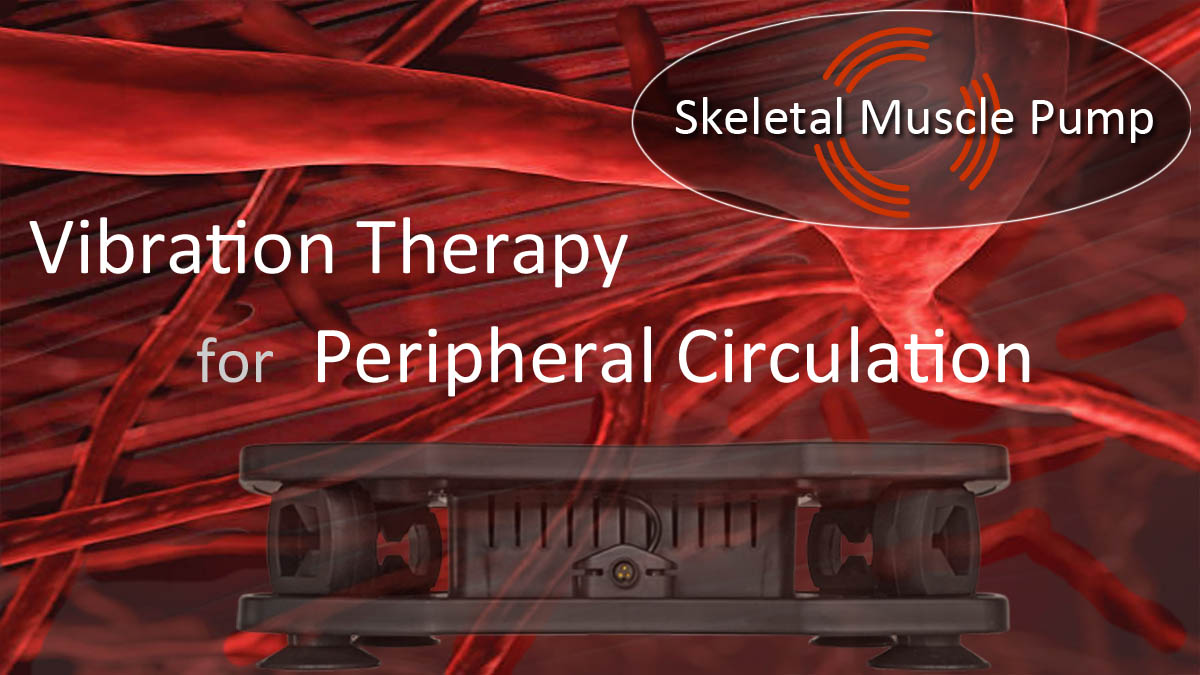
Vibration Therapy for Peripheral Blood Circulation Improvement
Vibration therapy has been well recognized for its effectiveness in improving blood circulation. The rapidly repeated muscle contractions induced by vibration work particularly well with the functionality of the peripheral vascular system.
The peripheral vascular system is a component of the cardiovascular system. It relays, regulates, and distributes arterial blood to tissues throughout the body and transports venous blood back to the heart.
- What Drive Blood Circulation?
- Skeletal Muscle Pump.
- Vibration Makes Skeletal Muscle Pump More Effective and Efficient.
- Muscle Perfusion and Oxigen Saturation Observed in Research Trials
- Vibration Therapy Applications for Circulation Improvement
- Circulation improvement for senior people
- Tissue Injury Recovery
- Hard-to-Diagnose Hard-to-Treat Diseases
- Vibration Exercise for Circulation Improvement
To comprehend how vibration therapy improves peripheral blood circulation, let's first learn about how blood is transported to and from tissues throughout the body.
What Drives Blood Circulation?
Heart, vessels and skeletal muscles are the major organs that drive the blood flow.
Often neglected is the essential role that skeletal muscles play in blood circulation. This is where vibration therapy comes into play.
| Function | Role | Driver | Attribute |
| Heart | Pump & suck | Cardiac muscle | Involuntary |
| Vessels | Relay & distribute | Smooth muscle | Involuntary |
| Skeletal muscles | Distribute & exchange | Skeletal muscle | Voluntary |


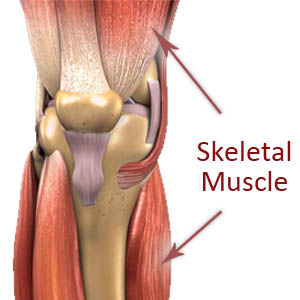
The heart plays the center role driving the blood flow. It pumps and sucks blood through the involuntary contraction of the cardiac muscles. .
Vessels of various sizes further relay and distribute blood throughout the entire body. They push the blood with the involuntary contraction of their smooth muscles.
Besides heart and vessels, skeletal muscle plays an essential role in blood circulation.
Skeletal Muscle Pump
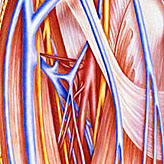
Blood vessels are closely intertwined with skeletal muscles. The contractions of skeletal muscles exert pressure on nearby blood vessels, aiding in fluid flow within the vessels. This physiological function is known as the skeletal muscle pump.
As blood reaches its tissue destination, the pressure from the heart and major vessels gradually diminishes. The skeletal muscle pump becomes essential for further blood relay and distribution.
The importance of the skeletal muscle pump is more significant for returning blood to the heart, especially from the feet and lower legs by overcoming gravity. That's why, when you sit or stand for a long time, taking a walk is necessary to assist circulation in your feet and lower legs.
The physiological process of muscle contraction involves the influx and release of interstitial fluids into and out of muscle cells. This fluid exchange fulfills the ultimate role of circulation.
In some situations, we need a more strong skelatal mucle pump function to improve peripheral blood circulation. Vibration therapy can serve this role practically well.
Vibration Make Skeletal Muscle Pump More Effective and Efficient.
While cardiac muscles and smooth muscles contract involuntarily, skeletal muscles typically contract voluntarily under the command of our brain.
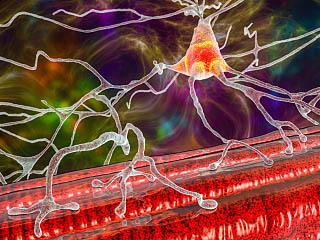
With the stimulation of vibration, skeletal muscle can also contract involuntarily.
Due to skeletal muscle's nature of stretch reflex response, we can utilize vibration to induce rapidly repeated skeletal muscle contraction, which makes the skeletal muscle pump more effective and efficient.
The fast-pace skeletal muscle pump effect is unique to vibration therapy, not achievable through other types of physical exercise.
Muscle Perfusion and Oxygen Saturation Observed in Research Trials
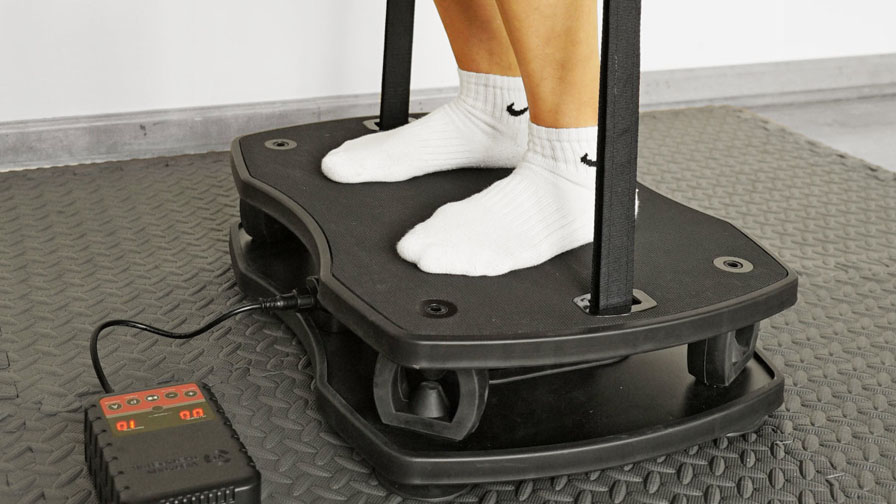
Based on controlled research trails and quantified studies, scientists have observed significantly higher muscle perfusion from doing vibration exercise than from doing other physical exercises. Check the link at the end of this article.
Through measuring blood volume, flow velocity and vessel diameter using Doppler imaging devise, scientists can calculate the muscle perfusion for more accurate quantitative study.
Other quantitative studies on vibration therapy for blood circulation improvement were conducted through oxygen saturation measurement. Some clinical trials observed vibration therapy led to the increase of oxygen saturation rate.
Increased muscle perfusion and oxygen saturation are evidences of increased peripheral circulation activities, and therefore the proof of blood circulation improvement.
Applications of Vibration Therapy for Circulation Improvement
Blood Circulation Improvement for Senior People
Senior people and physically weak people may not be able to maintain sufficient daily exercise for healthy blood circulation. Vibration therapy, using external energy, with its effectiveness and efficiency, provides a practical solution for these populations to improve blood circulation.
Many senior users reported increased energy level after vibration exercises. That is because the increase of blood oxygen saturation level after vibration exercise.
Tissue Injury Recovery
Tissue injuries can cause circulation problems, hindering the recovery. For injured people, regular rehab exercise may not be practical or sufficient for providing needed blood circulation to the injured tissue for the repair. Vibration can be introduced to local area to improve the microcirculation.
Many profession related muscle injuries are because of overusing secondary muscles. These injuries often get unnoticed at the initial stage, until chronic muscle injuries have been developed.
Secondary muscle are usually remote from major vessels. Cardio exercise may not be effective to bring blood to these muscle for the recovery. Vibration therapy can be introduced to these muscles to improve the circulation.
Hard-to-Diagnose Hard-to-Treat Diseases
Many hard-to-diagnose hard-to-treat diseases are associated with poor blood circulation. Vibration therapy, with its unique effectiveness in blood circulation improvement, provides a practical solution for treating these diseases. With vibration therapy, you may achieve a result that could not be achieved through regular physical therapy or mainstream medicine.
Vibration Exercise for Circulation Improvement
Squat, deadlft, tiptoe and calf-raise are most effective exercise poses to use on a linear vibration plate for circulation improvement.
A vibration frequency range from 30 Hz to 35 Hz is recommended because within this range, we can achieve the best skeletal muscle contraction experience, thanks to the muscle's resonance and damping effect.
Beginners should start with a lower frequency and gradually progress to the desired frequency range.
Multiple short exercise sessions throughout the day are recommended. This allows muscles to rest and recover, gradually improving their conditions and their microcirculation environment.
Be patient, persistent and observant!
References
- A systematic review of studies investigating the effects of controlled whole-body vibration intervention on peripheral circulation
- by M H Mahbub, Keiichi Hiroshige, Natsu Yamaguchi, Ryosuke Hase, Noriaki Harada, Tsuyoshi Tanabe PubMed.gov | PMID: 31278826
- “Effect of vibration on muscle perfusion: a systematic review”
- By Joel T Fuller, Rebecca L Thomson, Peter R C Howe, Jonathan D Buckley PubMed.gov | PMID: 23216759
- Local vibration therapy increases oxygen re-saturation rate and maintains muscle strength following exercise-induced muscle damage
- Aug 2021, S Percival, D T Sims Natsu Yamaguchi, | PubMed.gov
- Whole-body vibration and blood flow and muscle
- By Kenneth E Games, JoEllen M Sefton, Alan E Wilson PubMed.gov | PMID: 25974682
- The influence of whole body vibration on the central and peripheral cardiovascular system
- Dan Robbins, Priya Yoganathan, Mark Goss-Sampson PubMed.gov | PMID: 24237890
- Jay Tang
- About
-
Interpreting life science from an engineering perspective.
Featured Posts:
